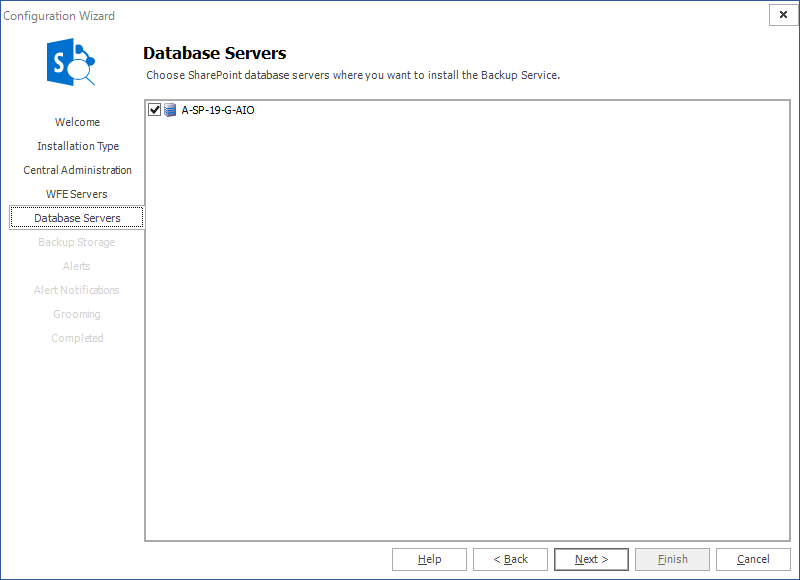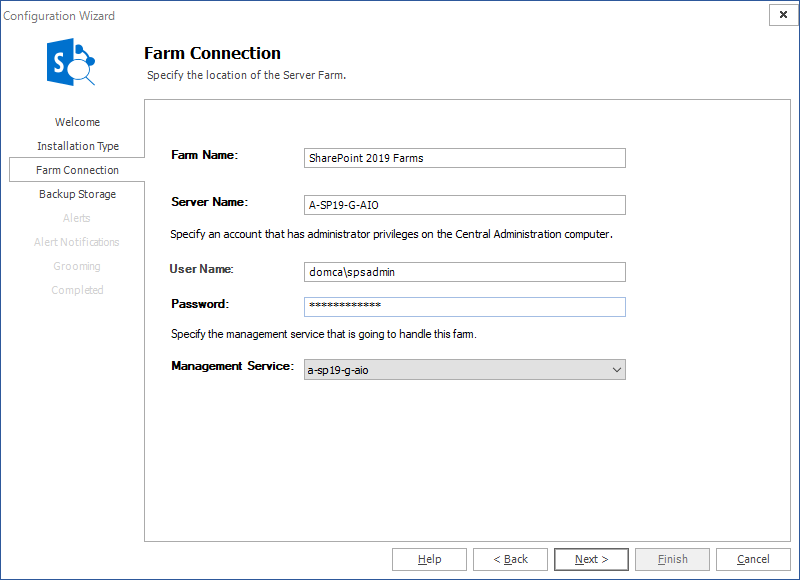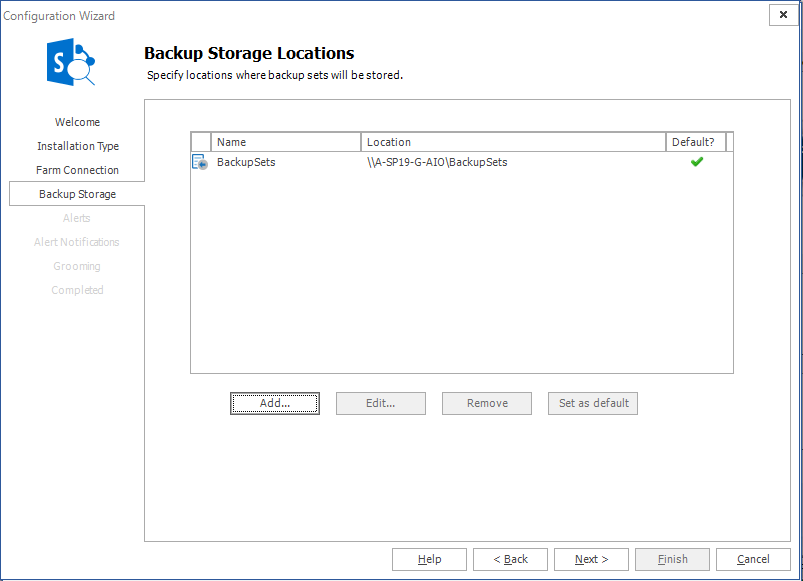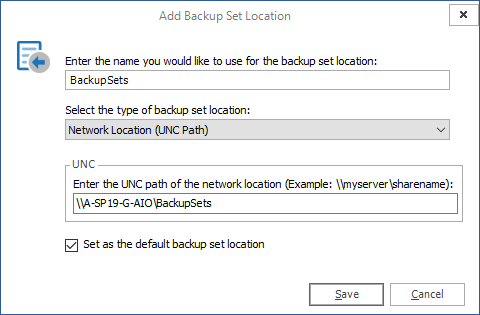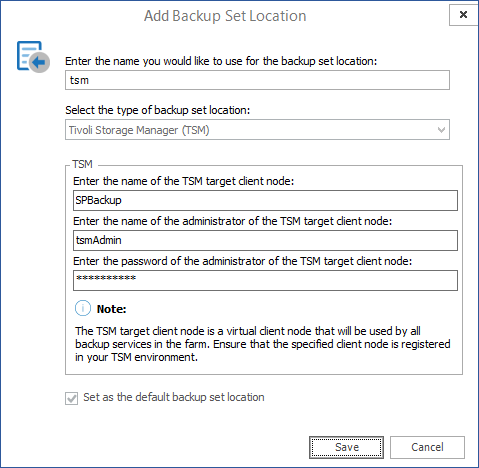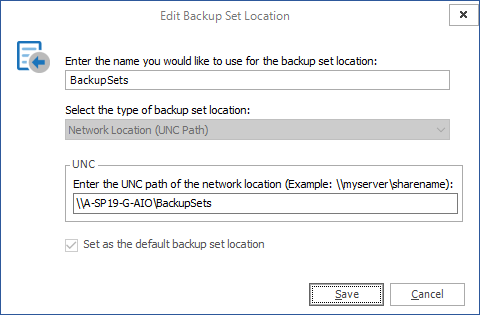Selecting WFE servers for the Backup Service
The WFE Servers page of the Configuration wizard lists the Web front end (WFE) servers in your SharePoint farm.
If your SharePoint farm includes one or more separate database servers, the Database Servers page lists the database servers.
Metalogix Backup for SharePoint uses the Backup Service instances that you install to back up the SharePoint objects that you specify in the farm.
If your disaster recovery planning includes farm backups of SharePoint 2013, 2016, 2019 or Subscription Edition farms, you must install the Backup Service on every WFE and every database server in your SharePoint farm.
When you use the Configuration wizard, you must install the Backup Service on at least one WFE.
|
|
TIP: The first Backup Service that you install must always be on a WFE server. |
You should normally use the Configuration wizard to install the Backup Service on every WFE and database server in your SharePoint farm.
You can use the Database Servers page to install the Backup Service on standalone database servers in your SharePoint farm. For more information about the Database Servers page, see Selecting the database servers to install the Backup Service on.
You can also use the Management Console to install the Backup Service on WFE hosts in the SharePoint farm. In addition, if you add a WFE or a database server to your farm, you can use the Management Console to install the Backup Service on the new server.
Finally, you can use the Metalogix Backup for SharePoint installer to install the Backup Service on the WFE or database server directly. To do so, you must be able to log in to the server with an account that is a member of the administrators group on the server. For more information about installing the Backup Service, see Installing the Backup Service.
When you install a Backup Service, you select the WFE server to install on. You also specify the user name and password that the Backup Service uses to run. The user account that you specify must have specific permissions for the farm. For more information about the permissions that the Backup Service user account requires, see Learning about the Backup Service requirements.
The SharePoint Services Web Application Service must be operating on the WFE where you install the Backup Service. If the server does not have the Web Application Service active, you can use the SharePoint Central Administration page to install it.
In the WFE Servers page of the Configuration wizard, review the selected servers, then click Next.
Can I manually install additional Backup Service instances?
Normally, you should not need to manually install additional servers. The WFE Servers page lets you install on every WFE server in the farm.
If you add a WFE or a database server, you can manually install an additional Backup Service in the Configuration tab in the Management Console. For more information about manually installing the Backup Service, see Installing the Backup Service manually.
Selecting Database Servers for the Backup Service
The Database Servers page of the Configuration wizard lists the standalone database servers in your SharePoint farm. A standalone database server hosts one or more SharePoint database components, but does not host a Web front end (WFE).
Metalogix Backup for SharePoint uses the Backup Service instances that you install to back up the SharePoint objects that you specify in the farm.
If your disaster recovery planning includes farm backups of SharePoint 2013, 2016, 2019 or Subscription Edition farms, you must install the Backup Service on every WFE and every database server in your SharePoint farm.
When you use the Configuration wizard, you can install the Backup Service on any database servers in the farm. The Database Servers page only appears if your farm includes one or more database servers that do not also host a WFE.
You should normally use the Configuration wizard to install the Backup Service on every database server in your SharePoint farm.
You can also use the Management Console to install the Backup Service on WFE hosts in the SharePoint farm. In addition, if you add a WFE or a database server to your farm, you can use the Management Console to install the Backup Service on the new server.
Finally, you can use the Metalogix Backup for SharePoint installer to install the Backup Service on the WFE or database server directly. To do so, you must be able to log in to the server with an account that is a member of the administrators group on the server. For more information about installing the Backup Service, see Installing the Backup Service manually.
When you install a Backup Service, you select the database server to install on. You also specify the user name and password that the Backup Service uses to run. The user account that you specify must have specific permissions for the farm. For more information about the permissions that the Backup Service user account requires, see Learning about the Backup Service requirements.
In the Database Servers page of the Configuration wizard, review the selected servers, then click Next.
Can I manually install additional Backup Service instances?
Normally, you should not need to manually install additional servers. The Database Servers panel let you install on every database server in the farm.
If you add a database server, you can manually install an additional Backup Service in the Configuration tab in the Management Console. For more information about installing the Backup Service manually, see Installing the Backup Service.
Specifying Farm Connection Settings
This window appears only when the Granular option has been selected in the Installation Type step of the Configuration Wizard.
To specify the SharePoint server account
1.In the Farm Connection page of the Configuration wizard, give your farm a name.
2.Type the name and password of the account that Metalogix Backup for SharePoint should use to connect to the Management Service for the farm in the User Name and Password fields.
3.Select the Management Service that will handle the farm that will be added. If this is the first time that a farm will be added, this section is read-only.
4.Click Next.
Specifying Backup Storage Locations
The Backup Storage Locations window is used to configure where farm backup sets will be stored.
Backup Storage Locations window for Installation Type = Complete
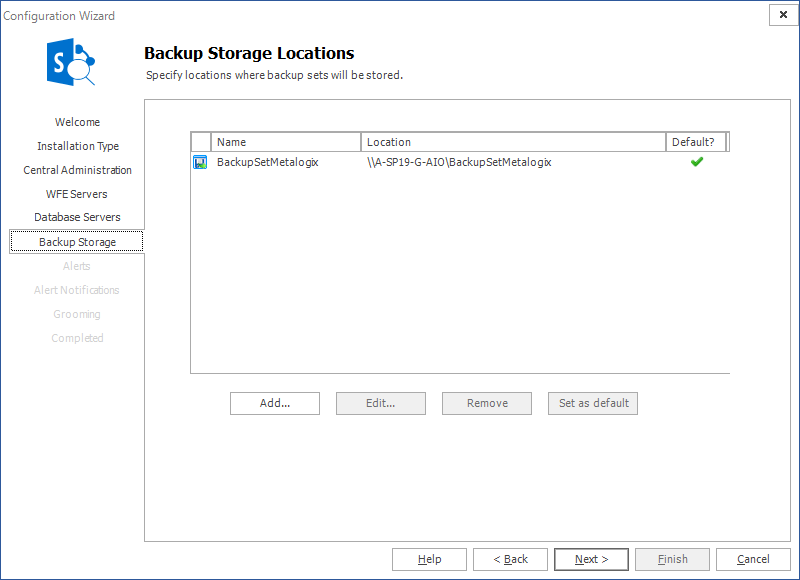
Backup Storage Locations window for Installation Type = Granular
To add a new Backup Location
1.Select the Add button to open the Add Backup Set Location dialog window.
2.Enter a name for the backup set location in the name field.
3.Select the backup set location type from the drop-down menu below. You can back up content from your SharePoint farms to a network location that you specify with a UNC path. You can also back up content to a Tivoli Storage Manager (TSM) client node, Azure and/or Amazon account. You must set up a TSM virtual server client node, Azure and/or Amazon account before you can back up to these options. For more information about using TSM with Metalogix Backup for SharePoint, see Learning about Tivoli Storage Manager.
|
|
NOTE: If you remove a backup location that Metalogix Backup for SharePoint uses to store data in TSM, removing the location removes references to the data in Metalogix Backup for SharePoint. In addition, Metalogix Backup for SharePoint sets the data objects to Inactive in TSM but does not automatically delete the data itself. If you need to delete the data from TSM, you should use the TSM management tools to do so. For more information about using TSM, see Learning about Tivoli Storage Manager. |
4.Provide the connection details for the chosen location type as required.
Example 1: Settings for Backup Set Location type = Network Location (UNC Path)
Example 2: Settings for Backup Set Location type = Tivoli Storage Manager (TSM)
5.Choose whether or not to set this location as the default for all backups by selecting the check box.
6.Select Save.
To Edit an Existing Backup Location
To edit an existing backup location, highlight it from the locations list and select Edit. Then modify the configuration as required and select Save.
To Remove a Backup Location
To remove a backup location, select it from the locations list and click Remove. Then confirm your choice by selecting Yes.
To Change a Default Backup Set Location
To change the default backup set location, select the location from the locations list and click Set as default. A green check mark in the Default? column will indicate that the new backup location is set as default.



